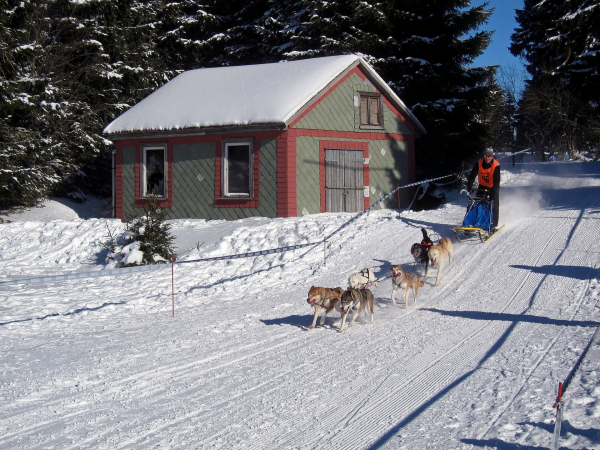Dogsleds: Long-distance races - what do they entail?
Dogsled races are fascinating events. For the dogs and the mushers, these are challenging activities for which they need to prepare properly not only physically but also mentally. The races are not just about performance, but especially about stamina and endurance. What does such a race entail, how to prepare for it and what to expect? That’s what we asked expert on the matter Veronika Klímová.


What is the essence of long-distance racing?
It is primarily about the synergy between the musher, his canine partners and nature.
What are the types of long-distant races?
There are long races and stage races. In Europe, most long races take place in Scandinavia. The length of such races ranges from 160 km to 1000 km.
What types of dogs are suitable for such races?
If we were talking about a breed’s suitability for such races, we could classify them into purebred Nordic breeds, which include Siberian Husky, Alaskan Malamute, Greenland Dog and Samoyed. The second category is crossbreeds, include, for example, the Alaskan Husky.
What does training for long-distance races look like?
Due to our climatic conditions, we usually start with the training no sooner than the turn of August and September (depending on temperatures). As a rule, racing and training season lasts until the end of March, after which dogs have long holidays. This is also because spring introduces warmer weather, and training in higher temperatures is not suitable for Nordic breeds. When I say higher temperatures, I mean anything above 15 degrees Celsius. After the long training pause, we start with short runs to gradually get the dogs into shape. We stretch these runs little by little. In the end, it’s not about the number of kilometres but about the hours. As I mentioned before, given our climatic conditions, the majority of training takes place mostly on mud.
So there is no training in summer?
Practically none, largely due to the high temperatures.
How does the handler prepare for racing?
Of course, even the musher should be prepared physically to endure such a race. But given the fact that dog training takes virtually all the time, the musher may prepare during the training pause (that is, in summer) or when the dogs have a day off, but I don’t know many mushers that would do that. I have not completed such a race myself yet, but in my opinion, it is not only about physical preparation, but one’s mental condition also plays a major part. The musher should be prepared for spending a lot of time on the sled (not only in training but also during the race itself), that he, in most cases, will have to deal with all the problems himself, he has to be prepared to face the challenging weather, learn to manage sleep, because during races, there is not much time or space to get proper rest.
What should a dog’s gear include prior to a race?
Before each race, mandatory equipment is inspected. Enough food, spare collar or harness, dog boots, wind-proof clothing are required.
What is most important for the dogs?
First and foremost, the dogs should enjoy it, being enthusiastic about every training session, every race.
What happens when a dog exceeds his limits during a race? What is the procedure for such cases?
Every dogsled race is mainly about the dogs. Upon arrival at each checkpoint, the musher and his dogs undergo a veterinary inspection, during which the veterinary team completely examines each dog to assess whether the dog is OK and can continue the race. If not, the dog is excluded from the race. The same veterinary inspection also takes place prior to departure from each checkpoint. Of course, problems may occur on the track during the race (the dog is exhausted or injured), in which case, the musher should disengage the dog and put it into the sled.

